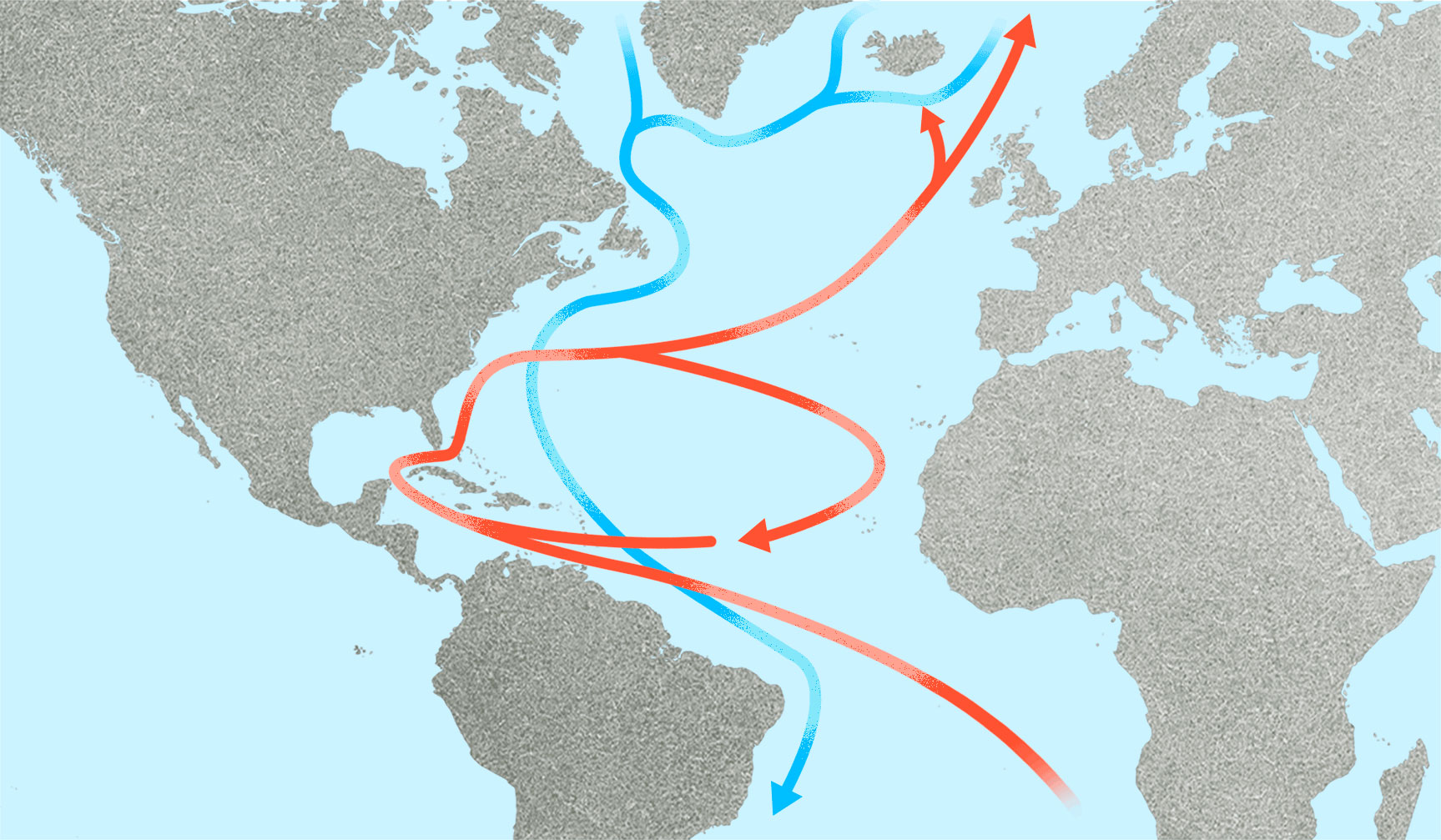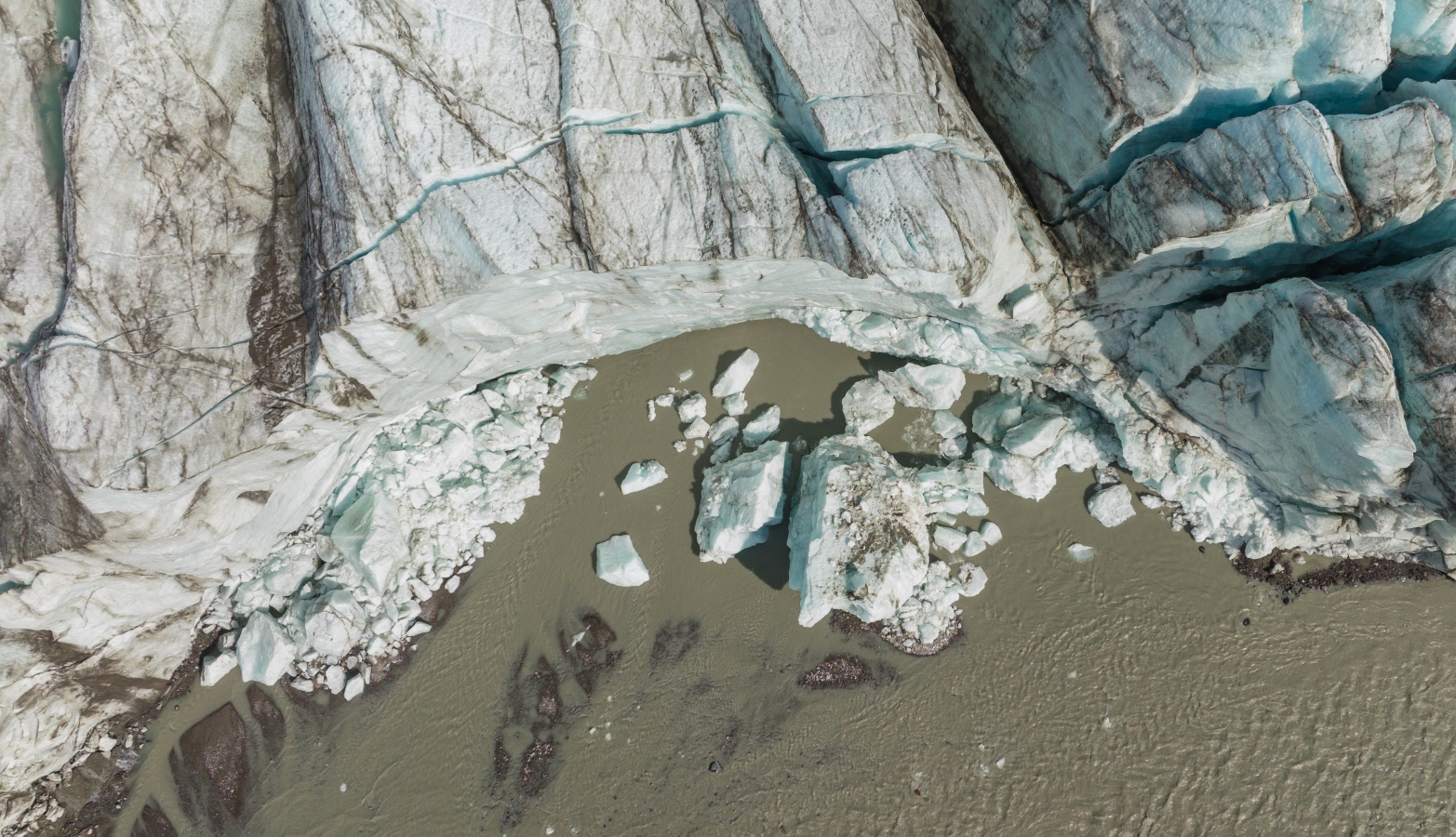Oceans all over the world rely on a delicate balance of different elements to remain stable: Temperature, salinity, pH, and pressure all combine to create the complex bodies of water that maintain conditions for marine life and define the planet. Climate change has altered those conditions, though, by warming oceans to record-high temperatures and introducing more fresh water through sea-ice and glacier melt.
Now, new research published on Tuesday warns that a vital Atlantic Ocean system could collapse by 2060, setting off one of the planet’s tipping points, or potential points of no return. That collapse could eventually spell catastrophe for the people who live in countries that border the Atlantic Ocean, leading to increased sea-level rise in the United States, decreased temperatures and altered storm patterns over Western Europe, rejiggered climate and agricultural zones, and hotter ocean temperatures in the Caribbean.
The study, published in the journal Nature Communications, contradicts findings from the Intergovernmental Panel on Climate Change, or IPCC, the United Nations’ scientific collaboration that publishes reports on the state of climate change. The group’s latest assessment, released last year, found the collapse of the group of Atlantic Ocean currents to be unlikely given the group only acknowledges weakening of the Atlantic Meridional Overturning Circulation, or AMOC, starting in 2004. The report notes that scientists cannot say when or if a collapse will happen, since they state even the decline prior to the 2000s cannot necessarily be attributed to climate change.
“We absolutely have deep respect for the IPCC report,” Susanne Ditlevsen, a statistician at the University of Copenhagen and co-author of the study, told Grist. “When we first started, we had this idea that we could use this method that’s data-based, to kind of confirm what the IPCC report is saying. So when we actually got our first results, we were very surprised, and we didn’t believe them.”
The AMOC is a thick band of water that travels from the Gulf of Mexico north along the southeastern U.S. before heading up the western edge of Europe, carrying mild temperatures with it, and onward toward Greenland and Iceland. Once there, the current is infused with heavy, cold, and salty water that then sinks, traveling back down the coast of the U.S. This system provides what one expert with the National Oceanic and Atmospheric Administration, or NOAA, called “symmetry” to temperatures in the North and South hemispheres.

But as carbon dioxide levels rise, temperatures increase, and ice melts in the Arctic, this current is being inundated with fresh water, throwing it out of balance. This has led to a weakening of the AMOC, which recently saw its slowest point in 1,600 years in 2021.
If the web of Atlantic Ocean currents stopped, it would constitute one of the Earth’s tipping points, which signal a dramatic, potentially irreversible shift in the condition of the planet — and its habitability for humans. A study last year found that the planet may have already passed a few tipping points, including tropical coral die-off and the beginning of the Greenland ice-sheet collapse, at just 1.1 degree Celsius (1.9 degrees Fahrenheit) of warming.
“We’re talking huge, huge climate changes in a very short time,” said Ditlevsen. “We would have an increase in the tropical areas … if you already have a very high, medium temperature, and it rises even higher — and that is on top of global warming. Just imagine: We have 3 billion people living there. That is a huge problem.”
The AMOC has stopped before, about 12,000 years ago, and led to a variation of about 10 to 15 degrees C (18 to 27 degrees F) within a decade. But that was during an ice age, and modern global warming is a vastly different situation.
The new research finds that this disintegration of the AMOC could occur as soon as 2025, or as far as 2095. While the findings are striking, scientists not involved in the research are approaching them cautiously.
Rong Zhang, an ocean scientist at NOAA, is skeptical of the methods used in the paper. She is particularly cautious about saying that the collapse will happen this century, let alone that it is imminent. The study uses historical records from the last 150 years to demonstrate that the weakening of the Atlantic Ocean current is accelerating. But high-quality observations of this system of currents were only established in 2004, which provides a much smaller time period to draw from.
“We need more direct AMOC observations to give us a real picture and a real early-warning signal,” she said.
Marco Tedesco, an oceanographer and professor at Columbia University, can see both sides of the argument.
Climate change necessitates that science can remain nimble and understand its increasing and exponential effects on the Earth, but also science’s precision and thorough nature of processes, like peer review, help establish and keep its authority on certain subjects, according to Tedesco.
Tedesco also notes that all the unknowns of climate change will only continue to complicate how much we can predict and measure all of those changes.
“The Earth is changing,” said Tedesco. “And it’s changing into a direction where it’s never been before, because it’s never moved so fast into that direction. And this, of course, is because of the CO2 that’s been pushed in the atmosphere in the past 100 years.”
*Correction: This story originally misspelled Marco Tedesco’s name.



